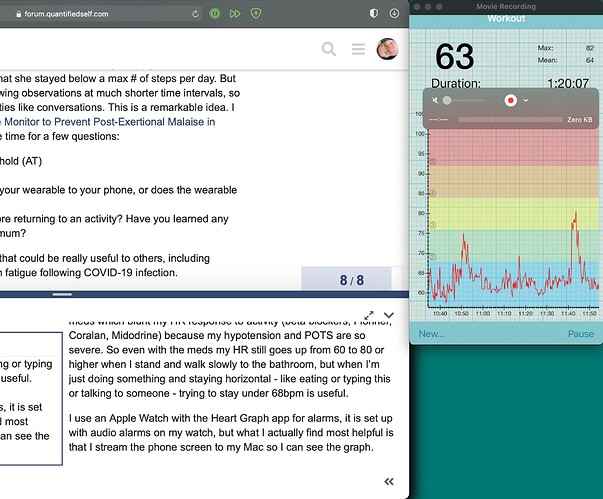(Screen grab from a project by @justintimmer)
I’m designing a master class to teach self-tracking and personal science with a focus heart related questions and heart rate as a signal. The promise of the course is to provide a step-by-step, accelerated program that takes participants from question to discovery in 10 weeks. As well the specific discovery that’s the focus of the individual’s workshop learning, the course is designed to teach a foundational skills in using empirical methods in daily life.
I have a list of topics and tools that will be at the core of the course.
- Protean HR: Why HR is so versatile for addressing personal health questions, both about cardiovascular health and fitness training specifically and about a wide range of concerns such as mood, allergy and auto-immune conditions, digestive health, and sleep.
- Physiological primer. (Good to have a sense of how different systems are connected, esp. heart and nervous system)
- Translating personal health concerns into answerable empirical questions, and how to take advantage of HR to design powerful self research.
- Choosing exactly what to track, setting a protocol, testing, and observing.
- Reasoning with time series data.
- Translating insights into actionable discoveries.
There’s a lot of detail in here that I’ll spare you. BUT, I want to ask for some help, because I’m concerned about being biased by my own specific interests and missing important questions I should address. I know a lot of people here have tracked HR in relation to various projects, and we’ve discussed lots of details in other threads. But if you can remember what barriers you faced, and especially what questions you still don’t have a good answer to, I can see about addressing them in the course. (I’ll do my thinking in public so maybe a benefit of sharing your unsolved problems/questions is that I can help find the answer.)
What do you want to know about self-research using HR?


 :
: